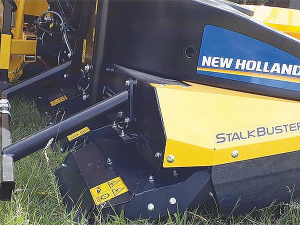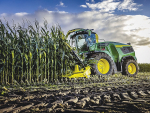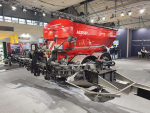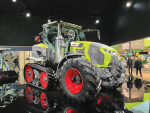Corn Borer has become a serious issue in maize growing regions.
According to the Food and Agriculture Organization of the United Nations, the pest causes yield losses up to 50%. The FAO also estimate that the borer’s caterpillar destroys 4% of corn harvests globally.
Borer caterpillars damage corn by chewing tunnels through the corn plant, thereby restricting its water and nutrient supply and making the stems easy to snap. This means the plant is more susceptible to diseases – such as the common corn smut and fusarium infections that can also go on to affect subsequent crops.
To help alleviate the problem, New Holland Agriculture is introducing a new 8-row maize header fitted with the Stalkbuster System. This system controls the borer problem without needing to use pesticides or biological plant protection agents.
Working with header supplier Kemper, the system is integrated into the base frame of the rotary 8-row corn header and breaks up the stubble before it can be flattened by the harvester’s wheels.
Consisting of a swinging gearbox with an integrated ratchet clutch that swings the specially shaped Buster flail, each row of stubble is broken up individually. The special swinging gearbox ensures optimum ground adjustment for every single row, while a pneumatic pressure system provides for additional soft tracking of ground contours.
If the self-propelled forage harvester needs to reverse, the Stalkbuster units are automatically lifted when the drive lever is actioned, preventing any damage.
The action of the units sees stubble smashed into small pieces down to the ground level, destroying the overwintering habitat for the corn borer. This also reduces the fusarium risk and lowers lessens any bulky residues for post-harvest cultivation operations.
With a power requirement said to be only 4hp per row, the system uses much less power than traditional post-harvest mulching. It also has the additional benefit that stalks are “chopped’ before they are flattened by the harvester wheels or those of a tractor powering a conventional mulcher, making the process cost effective.



















